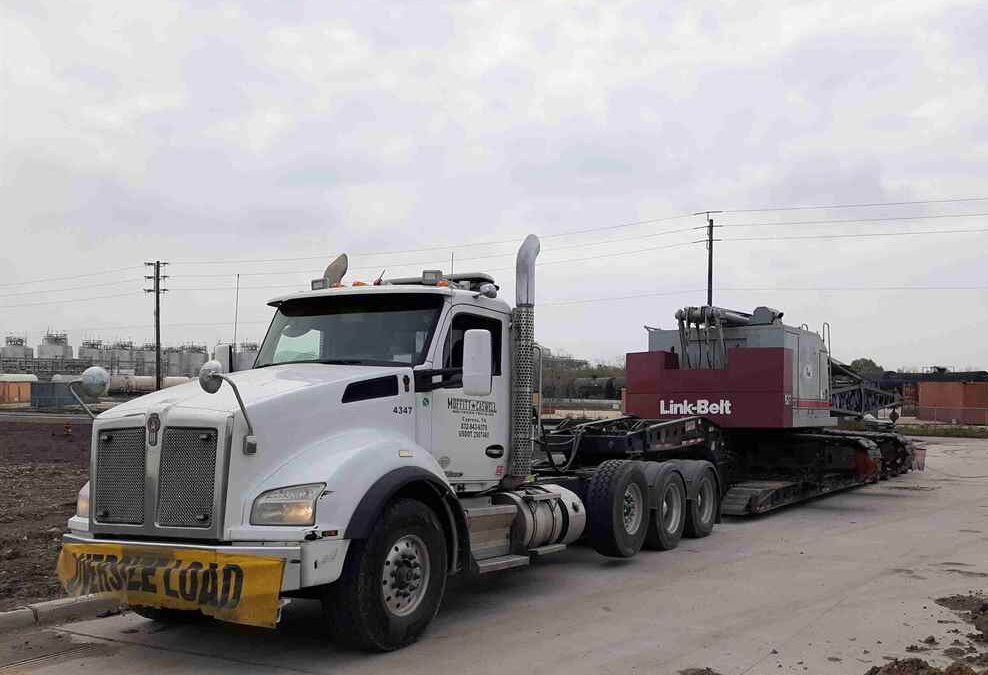
When it comes to moving oversized or overweight machinery, preparation makes all the difference. Whether you’re transporting construction equipment, industrial generators, or massive agricultural machines, following a clear plan ensures your freight arrives safely and on time. Heavy haul transport comes with unique challenges, but with the right steps, you can avoid costly delays and damage.
As an experienced heavy haul company, we know that proper preparation doesn’t just protect your investment—it keeps everyone safe on the road.
Understand the Specific Requirements of Your Equipment
Start by assessing the dimensions, weight, and shape of your equipment. Every state has regulations regarding width, height, and axle weight. Before scheduling your heavy haul transport, confirm the exact specifications of your machinery.
Your transport provider needs precise information to secure permits, choose the right trailer, and map an approved route. Inaccurate details can cause route denials or permit rejections, which often lead to delays or rescheduling.
Clean the Equipment Thoroughly
Although it might seem unnecessary, cleaning your equipment before transport serves multiple purposes. First, it makes inspection easier. You can clearly identify pre-existing damage and document it with photos. Second, authorities may inspect your load at checkpoints. A clean machine shows you’re serious about safety and compliance.
Moreover, removing dirt, debris, and excess grease reduces the risk of materials falling off in transit. As a result, you improve road safety and protect your equipment from unnecessary wear.
Remove or Secure Loose Components
Most heavy equipment has detachable parts such as mirrors, toolboxes, blades, or accessories. If these items aren’t essential during transport, remove and pack them separately. Doing so prevents movement, breakage, or loss during the trip.
For components that can’t be removed, use industrial-grade straps or chains to secure them tightly. Your transport team will appreciate the extra care, and you’ll reduce the chance of insurance claims caused by shifting or falling parts.
Check Fluids and Battery
Before you hand off your equipment, inspect all fluid levels. Drain fuel or hydraulic fluid if required by the transport provider or the specific haul route. Some states mandate fluid reduction for fire safety during long-distance heavy haul transport.
Also, disconnect the battery to prevent accidental electrical discharge or short circuits. If the battery must remain connected for loading or unloading, inform your transport crew so they can prepare accordingly.
Inspect Tires, Tracks, and Undercarriage
Next, examine the undercarriage thoroughly. If your equipment runs on tires, check for proper inflation and wear. Replace damaged or overly worn tires to prevent shifting during loading and unloading.
For track-based equipment, inspect the tracks for cracks, rust, or loose components. Any instability in the undercarriage can compromise safety during heavy haul transport, especially over long distances or rough terrain.
Provide Clear Loading Instructions
Even the most experienced haulers benefit from specific instructions. Share loading points, lifting guidance, or any unique handling procedures with the crew in advance. If your equipment requires special tools or adapters for loading, make sure they’re available at the pickup site.
You improve both safety and speed when everyone understands the loading process ahead of time.
Secure All Paperwork and Permits
Before the transport date, confirm that all required documents are ready. These may include:
-
State and federal permits
-
Bill of lading
-
Insurance certificates
-
Weight certifications
-
Escort or pilot car requirements
Having everything in place avoids legal complications and unexpected stops. Your heavy haul transport provider should assist with permitting, but you remain responsible for accurate details.
Choose the Right Hauling Partner
Not all transportation companies handle oversize equipment with the same care or expertise. Choose a provider with a strong safety record, appropriate equipment, and experienced operators. Confirm that they carry the proper insurance and understand local and interstate hauling regulations.
The right partner won’t just move your load—they’ll help you plan every step of the journey, from preparation to delivery.
Double-Check Before Pickup
Finally, conduct a final walkaround with your transport team. Review the checklist, inspect tie-down points, confirm measurements, and ensure all documents are in hand. Taking 15 minutes for a final check can save hours or days in delays.
Once your equipment leaves the site, monitor the trip if tracking is available. A proactive approach keeps your project moving forward and your gear protected.
Preparing your equipment for heavy haul transport requires attention to detail, careful planning, and open communication. When you follow the right steps, you reduce risk, improve safety, and ensure a smooth delivery every time.
If you’re looking for a trusted partner for heavy haul transport, contact us today. Our expert team will help you prepare, plan, and deliver your load with confidence—every mile of the way.





